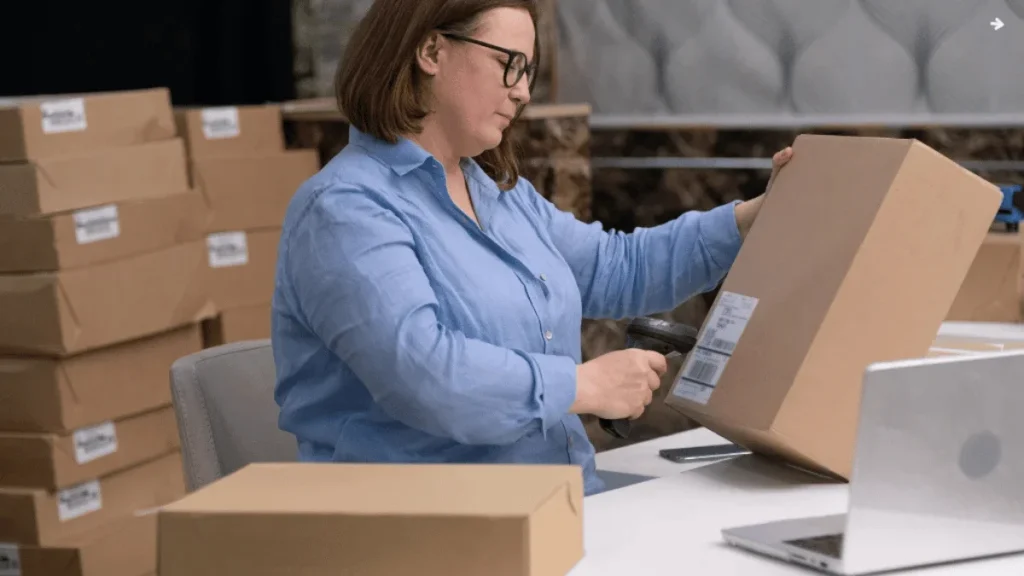Is Amazon FBA truly profitable for you? Understanding the nuances of costs versus sales is vital. While many sellers thrive on Amazon’s platform, hidden expenses like shipping fees and storage costs can erode your margins. By examining your inventory management and marketing strategies, you can uncover opportunities for increased profitability.
But what specific steps can you take to guarantee your success in this competitive landscape? Let’s explore the essential elements that can make or break your business.
Key Takeaways
- Profitability in Amazon FBA depends on effective cost management, including shipping and fulfillment fees.
- Higher sales volume can enhance profits, but requires strategic inventory management to avoid excess costs.
- Analyzing competition and optimizing pricing can help maintain healthy profit margins.
- New sellers may face challenges but can achieve profitability through careful research and marketing strategies.
- Leveraging data analytics to monitor performance and market trends is essential for maximizing profits.
Is Amazon FBA Profitable? Understanding the Potential for Sellers

When considering whether Amazon FBA is profitable, you might wonder what factors truly impact a seller’s success. The potential for sellers hinges greatly on profit margins, which can vary widely based on product selection and market demand.
Fulfillment services provided by Amazon streamline operations but also introduce business expenses that can eat into your profits. To maximize monthly profits, it’s important to conduct thorough market research and optimize inventory management.
Understanding your cost structure, including shipping and storage fees, is vital for maintaining healthy profit margins.
As you evaluate the profitability of Amazon FBA, consider the delicate balance between leveraging Amazon’s resources and managing your expenses effectively to achieve sustainable success.
How to Calculate Profitability When Using Amazon FBA?

Calculating profitability in Amazon FBA involves several key components that every seller should understand. First, you need to assess your initial investment, which includes product costs and shipping fees.
Then, factor in fulfillment costs, as Amazon charges fees for storage and order processing. Monthly storage fees can add up, especially if your inventory lingers. To determine your profit, subtract these costs from your selling price.
Don’t forget to contemplate potential profitability through effective inventory management; keeping your stock levels optimized can help reduce storage fees and increase turnover.
A strategic approach to these elements will provide a clearer picture of your profitability in the Amazon FBA landscape.
What Are the Key Factors That Impact Amazon FBA Profitability?

Although many factors can influence profitability, a few key elements stand out for Amazon FBA sellers. To maximize your profit margins, you should closely monitor:
- Sales: Higher sales volume can lead to increased profitability, but it’s important to manage costs effectively.
- Shipping costs: These can eat into your profits, so optimizing logistics is essential.
- Fulfillment fees: Amazon’s fees for storage and shipping can greatly impact your bottom line, so factor these into your pricing strategy.
- Inventory levels: Balancing inventory to avoid stockouts or overstock is critical for maintaining sales momentum.
Effective marketing strategies and customer satisfaction play important roles in driving sales and fostering repeat business, further enhancing profitability.
How to Maximize Profitability with Amazon FBA?

To maximize profitability with Amazon FBA, you need to adopt a strategic approach that encompasses various aspects of your business. First, analyze your fulfillment fees and seek ways to reduce them, such as optimizing your shipping methods.
Efficient inventory storage is essential; avoid excess stock to minimize costs and guarantee your products stay competitive. Building a strong customer base through effective marketing strategies can greatly enhance sales.
Utilize social media and email campaigns to engage potential buyers. Finally, focus on creating passive income streams by diversifying your product offerings and exploring additional sales channels.
By strategically managing these elements, you can boost your profitability and make the most of your Amazon FBA experience.
5 Ways to Make Amazon FBA Profitable for Your Business

To make Amazon FBA truly profitable for your business, you’ll need to adopt a strategic approach. Focus on selecting high-margin products with low competition while optimizing your listings for better visibility.
Leveraging Amazon’s advertising tools and streamlining your inventory management can greatly enhance your sales and reduce unnecessary costs.
1. Choose high-margin products with low competition
Finding high-margin products with low competition is essential for maximizing your Amazon FBA profitability.
By strategically selecting profitable products, you can build customer trust and guarantee long-term success as an e-commerce entrepreneur. Here are some key factors to take into account during your product selection process:
- Market Research: Analyze trends and customer demand to identify gaps in the market.
- Competitor Analysis: Assess existing listings to find areas with low competition.
- Profit Margins: Aim for products that provide a significant profit margin after all costs.
- Quality and Reliability: Choose products that meet quality standards to maintain customer trust.
2. Optimize your Amazon listings for better visibility
Optimizing your Amazon listings is essential for enhancing visibility and driving sales. Start by utilizing Amazon Seller Central to refine your product listings. Focus on incorporating relevant keywords in your titles and descriptions; this will improve your search rankings and attract more potential buyers.
Align your marketing efforts with these keywords to create cohesive campaigns that resonate with your target audience.
Actively seek customer feedback and use it to enhance your listings; addressing concerns or suggestions can lead to positive reviews, which are vital for building trust.
Remember, listings with higher ratings often achieve better visibility, so prioritize maintaining a strong reputation. By strategically optimizing your listings, you’ll increase your chances of success on the platform.
3. Use Amazon’s advertising tools to drive more sales
Leveraging Amazon’s advertising tools can considerably boost your sales, especially when you understand how to strategically implement them. Utilizing Amazon PPC is a smart way to drive targeted traffic to your listings, eventually enhancing your online business’s visibility. Here are some effective strategies:
- Optimize your campaigns: Regularly adjust bids and keywords based on performance data.
- Utilize Sponsored Products: This helps in placing your products in front of potential customers actively searching.
- Monitor customer inquiries: Responding promptly can improve your seller rating, encouraging more sales.
- Test different ad formats: Experiment with Sponsored Brands and Display Ads to discover what resonates best with your audience.
4. Streamline inventory management to avoid storage fees
Effective inventory management is essential for maximizing profitability in Amazon FBA, as it helps you avoid unnecessary storage fees that can eat into your margins.
To achieve this, focus on streamlined logistics that align with your sales velocity. Regularly assess your inventory levels to identify excess inventory, which can lead to increased storage fees at fulfillment centers.
Implement ongoing management practices, like forecasting demand and optimizing reorder points, to maintain a healthy inventory turnover. Using tools and software for real-time tracking can provide insights that help you make informed decisions.
By staying proactive in your inventory management, you’ll not only minimize storage costs but also enhance your overall profitability in the competitive Amazon marketplace.
5. Take advantage of Amazon Prime for faster shipping
Managing inventory effectively sets the stage for improving your overall Amazon FBA profitability, but another key aspect is utilizing Amazon Prime for faster shipping. By leveraging prime shipping, you enhance your customer service and create a competitive edge. Here’s how you can make the most of this fulfillment method:
- Increase customer trust: Faster delivery times boost buyer confidence.
- Expand your market: Cater to Prime members who prefer quick shipping.
- Enhance sales velocity: Quick shipping can lead to increased sales and higher rankings.
- Improve customer satisfaction: Happy customers often lead to repeat business.
For business owners, embracing Amazon Prime is essential. It greatly boosts your potential for success, making faster shipping an invaluable strategy in the Amazon FBA landscape.
How Amazon FBA Fees Affect Your Profit Margins?

Although you might be drawn to the potential earnings of Amazon FBA, it’s vital to understand how fees can greatly impact your profit margins. The Amazon FBA fees, including fulfillment fees and storage fees, can eat into your earnings, making strategic planning in seller central vital.
Here’s a quick breakdown of common fees:
| Fee Type | Amount (Approx.) | Impact on Profit Margins |
|---|---|---|
| Fulfillment Fee | $2.50 – $5.00 | Decreases margin |
| Storage Fee | $0.75/cubic ft | Increases costs |
| Referral Fee | 15% – 20% | Reduces profit |
| Monthly Fees | $39.99 | Fixed cost |
Understanding these fees helps you assess various business models effectively, ensuring you maintain healthy profit margins.
How to Minimize Amazon FBA Costs and Maximize Your Profits?
To thrive in the competitive landscape of Amazon FBA, you’ll need a strategic approach to minimize costs and maximize profits. As an online retailer, understanding your business’s financial dynamics is essential. Here are some effective strategies to achieve savings:
- Optimize your inventory: Avoid overstocking to minimize storage fees.
- Choose the right pricing: Analyze competitors to set competitive prices without sacrificing profits.
- Leverage Amazon’s tools: Utilize FBA reports to track fees and adjust your strategy accordingly.
- Focus on shipping efficiency: Streamline your shipping process to reduce costs.
Is Amazon FBA Profitable for New Sellers or Only Experienced Ones?
Wondering if Amazon FBA is a viable path for new sellers or if it’s better suited for those with experience? The truth is, Amazon FBA can be profitable for both groups, but the approach differs considerably.
New sellers often face a steep learning curve, requiring careful research and strategy to find lucrative products and price points. However, with the right guidance, you can navigate these challenges successfully.
Experienced sellers, on the other hand, leverage their knowledge of market trends and customer preferences to optimize their listings and inventory management.
Whether you’re just starting or an experienced seller, profitability hinges on your ability to adapt and learn. So, is Amazon FBA profitable for new sellers or only experienced ones? It can be profitable for both, if approached strategically.
How to Leverage Amazon’s Analytics to Boost Profitability?
As you explore Amazon FBA, leveraging the platform’s analytics can greatly enhance your profitability. By diving into the data, you can make informed decisions that boost your sales. Here are some strategic approaches to reflect upon:
- Understand customer bases: Analyze purchasing behaviors to tailor your marketing strategies.
- Monitor market trends: Stay ahead by recognizing shifts in demand and adjusting your product sourcing accordingly.
- Evaluate competition: Use analytics to identify what your competitors are doing well, and find gaps in the market you can exploit.
- Optimize inventory: Analyze sales data to manage stock levels effectively, minimizing costs while maximizing opportunities.
How Product Pricing Affects Your Amazon FBA Profitability?
While you might have a fantastic product, its pricing can make or break your profitability on Amazon FBA. Setting the right product price is essential; it directly impacts your profit margin and can determine your annual profits.
If you price too high, you risk losing customers to third-party sellers. Conversely, pricing too low can erode your profit margin, turning your investment into a financial burden.
To achieve financial freedom, you need a strategic approach: assess competitor pricing, understand your costs, and factor in Amazon’s fees.
A well-thought-out pricing strategy not only enhances your competitiveness but also secures your desired profit levels. In the end, the right price can elevate your FBA business, turning potential into tangible profits.
Why Choosing the Right Fulfillment Method Can Improve Your Profitability?
Choosing the right fulfillment method can greatly impact your profitability, especially when maneuvering through the complexities of Amazon FBA.
By strategically selecting your logistics approach, you can enhance your profits and guarantee customer satisfaction. Here are some key factors to take into account:
- Cost Efficiency: Evaluate the investment required for different fulfillment methods.
- Speed of Delivery: Quick fulfillment can lead to happier customers and repeat business.
- Inventory Management: Effective logistics can minimize holding costs and stockouts.
- Scalability: Choose a method that can grow alongside your business.
How Mohit Ecommerce Can Help You Increase Amazon FBA Profitability?
To maximize your Amazon FBA profitability, leveraging the expertise of Mohit Ecommerce can be a game changer. We offer strategic insights tailored to your specific product and market dynamics.
By analyzing customer behavior and optimizing pricing, you can enhance your competitive edge. Mohit Ecommerce also helps you navigate fees for storage and fulfillment, ensuring you minimize unnecessary costs.
Our techniques allow you to streamline your operations, reducing the investment of time typically required for effective management.
By partnering with us, you can transform your Amazon store into a more lucrative business, maximizing returns on every product listed. With our guidance, you’ll not only boost profitability but also create lasting customer relationships for sustainable growth.
How to Scale Your Amazon FBA Business for Maximum Profit?
Scaling your Amazon FBA business for maximum profit requires a strategic approach that goes beyond simply increasing inventory. To achieve long-term success and substantial profits, focus on the following tactics:
- Optimize product listings to enhance visibility and conversions.
- Invest in effective marketing strategies to reach your target audience.
- Analyze customer feedback to improve your offerings and guarantee a positive experience.
- Diversify your product range while aligning with your business goals to boost potential earnings.
How to Handle Returns and Refunds While Maintaining Profitability?
While managing returns and refunds might seem like a challenging task, it’s vital for maintaining profitability in your Amazon FBA business. To optimize this process, start by analyzing your return rates.
High returns could signal issues with product quality or misaligned selling prices. Improving product descriptions can enhance customer satisfaction and reduce refunds.
Streamline your inventory management; make certain you have enough stock to cover returns without overextending your finances. Excellent customer service plays a significant role here; prompt and friendly responses can turn potential disputes into loyal customers. Finally, consider restocking fees for returned items to mitigate losses.
By strategically addressing returns and refunds, you can safeguard your profitability while keeping customers happy.
How to Evaluate the Long-Term Profit Potential of Your Amazon FBA Business?
Evaluating the long-term profit potential of your Amazon FBA business requires a strategic approach that goes beyond immediate sales figures. To guarantee sustainability, consider these key factors:
- Profit margin: Analyze your costs, including long-term storage fees, to maintain healthy margins.
- Monthly sales: Track trends over time to project future growth accurately.
- Ecommerce platform changes: Stay updated on Amazon policies and fees that could impact profitability.
- Common pitfalls: Avoid overstocking and misjudging demand, which can lead to unnecessary fees and losses.
Utilizing this complete guide, you can make informed decisions that enhance your FBA business’s longevity and profitability, ensuring it thrives in the competitive marketplace.
How to Improve Your Amazon FBA Profitability with Better Product Research?
To boost your Amazon FBA profitability, focusing on effective product research is crucial, as it lays the foundation for informed decision-making.
By identifying product trends and selecting the proper product, you can capitalize on lucrative opportunities for sellers. Analyzing reviews helps you understand customer preferences, which can lead to data-driven decisions that enhance your product offerings.
Here’s how product research can influence your success:
| Factor | Impact on Profitability |
|---|---|
| Product Trends | Helps identify demand |
| Proper Product Selection | Reduces return rates |
| Customer Reviews | Direct insight into needs |
| Excellent Customer Service | Builds brand loyalty |
Investing in thorough research eventually leads to better products and satisfied customers, driving profitability in your Amazon FBA business.
How to Create an Efficient Amazon FBA Workflow to Maximize Profits?
Effective product research sets the stage for a successful Amazon FBA venture, but having a streamlined workflow is equally important for maximizing profits. To achieve this, focus on these key aspects of your Amazon FBA process:
- Inventory Management: Use software tools to track stock levels and reorder points, ensuring you never run out of popular items.
- Storage Solutions: Optimize your storage space to reduce costs and enhance efficiency in picking and packing.
- Shipping Processes: Establish clear shipping protocols to expedite delivery and improve customer satisfaction.
- Tools and Automation: Implement automation tools to minimize manual tasks, allowing you to concentrate on strategic growth.
Why Consistent Monitoring of Your FBA Business Can Lead to More Profit?
While running an Amazon FBA business can be rewarding, consistently monitoring key performance indicators (KPIs) is essential for maximizing profitability.
By keeping track of your items’ performance, you can identify trends impacting sales and adjust your marketing strategies accordingly.
Experienced sellers know that referral fees can eat into profits, so understanding these costs allows you to maintain a healthy profit margin. Regular analysis also helps you spot underperforming products, enabling you to make strategic decisions about inventory and pricing.
Consistent monitoring not only highlights opportunities for improvement but also protects your bottom line, ensuring that your FBA business remains profitable in a competitive market. Stay proactive, and you’ll reap the benefits of your diligence.







